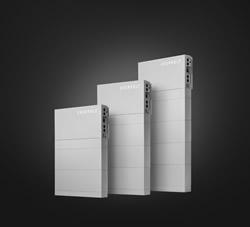Scan PV Module Barcodes into a Digital Twin to Lift Productivity
If you’re going to safe harbor [solar projects for tax filing], you have to keep very careful track of where that equipment is and where it is installed.
A digital twin based on your as-built empowers your company to track where solar modules come from, lift productivity, and reduce risks and expenses. In this audio transcript from the Watts Up podcast, Nikhil Vadhavkar, CEO and co-founder of Raptor Maps, explains how we use smartphones to log solar module serial numbers into a digital twin of a solar site.
A digital twin is a virtual model of a physical object, system or process. Raptor Maps uses state-of-the-art digital twins to help companies manage performance and lifecycle data pertaining to solar farms. Solar arrays can be quite large, containing millions of modules. Having a digital twin makes project commissioning easier, including allowing you to verify supply chains for safe harboring. It also enables a host of features that lift staff productivity, power output and ultimately financial return.
Marie Burgquist: The software, from my understanding, has a barcode scanning feature. Could you talk us through the process and the benefits of having that feature?
Nikhil Vadhavkar: Absolutely. One of the major thrusts in solar has been supply chain traceability and transparency. Especially as more money earmarked for what's called environment, sustainability and governance goes into solar, that traceability is critical. People want to know . . . Where is their equipment? Was it ethically sourced?
If you're going to safe harbor [solar projects for tax filing], you have to keep very careful track of where that equipment is and where it is installed.
What we found was that you've got a couple really important moments in the solar lifecycle where you can structure all of the data. One of them is during construction.
We looked and we said . . . "Every module has a serial number. We know that these serial numbers have to be captured for warranty claims. How come that's not being captured upfront? How come that's not being scanned into a really rigorous data model?"
The answer was: "It's always time and money, right?" When you're building a utility-scale site, you might have a million-plus modules.
But we've come a long way. Both in terms of the digital twin, which enables you to go much faster, but also in terms of advances like smartphones [and] optical character recognition.
We said, "What if you could kill two birds with one stone? What if you could create that documentation that's used to automate that paperwork and derisk it for the owners?" Basically, pull future OPEX into a smaller amount of CAPEX today. But also be able to do it at scale, so you can have 30 people [or] 100 people scanning everything simultaneously.
Smartphones were the solution. One of the things that we've launched and successfully used with some of the biggest independent power providers and construction companies is a mobile application where anyone can download the mobile app and scan the serial number into the digital twin.
And importantly, not only is that information validated, but it's a living model. People think solar farms are static and they're actually pretty dynamic. You might need to swap things out. You might have a weather event, put in an insurance claim, things like that.
We also enabled people to maintain that digital model. So when it's passing from party to party, they have the latest understanding of what that asset looks like.
About Raptor Maps
Raptor Maps offers an advanced software platform to standardize data, analyze insights and collaborate across solar. Commissioning info, serial number mapping, equipment records, inspections, aerial thermography, warranty claims, mobile tools and more — all powered by our industry-leading data model. Intelligence for the entire solar industry — asset owners, managers, O&M, engineers, EPCs, financiers and OEMs. Standardize and compare data across installations, increase performance and reduce costs.
Featured Product

EVERVOLT home battery storage: Dependable power, with or without solar
Whether paired with solar or used independently, the renewable energy stored in an EVERVOLT home battery system serves as a reliable backup against unpredictable utility grid fluctuations and weather-related events. Keep essential appliances running longer and maintain your lifestyle during unforeseen circumstances. Our EVERVOLT battery storage systems are backed by a comprehensive 12-year warranty from Panasonic, including coverage for labor. Learn More about Panasonic EVERVOLT.
